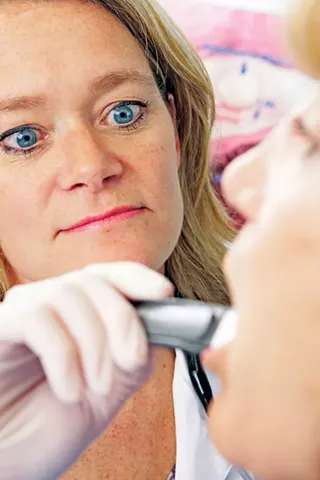Almost 800,000 Americans — that’s more than the population of San Francisco — suffer a stroke in any given year. “We all want our independence, and stroke is the one thing that can take it away quickly,” says Amy Doneen, MSN, ARNP, director of the Heart Attack and Stroke Prevention Center in Spokane.
The chance of having a stroke more than doubles each decade after the age of 55, according to the Centers for Disease Control and Prevention. A stroke occurs when a blood clot blocks the flow of blood to a part of the brain (called an ischemic stroke), or when a blood vessel in the brain breaks and causes a hemorrhage. Either way, brain cells die, and the resulting damage may include loss of speech, movement, memory and other serious, long-term disabilities.
“Everyone should be aware of how strokes occur and find out if they’re at risk,” says Doneen.
A big and well-known risk factor is high blood pressure, rather easily diagnosed at your doctor’s office or even with a home monitor. Another risk is more stealthy. Atrial fibrillation is an irregular heartbeat or rhythm caused by a problem with the heart’s electrical system. A-fib puts a person at risk of stroke because it causes blood to pool in the heart. When blood pools, it can form clots that can lead to a stroke.
The American College of Physicians is working to educate patients about atrial fibrillation and encourage them to talk to their doctors about it. Symptoms can be specific — like an occasional pounding, fluttering or irregular feeling in the chest and shortness of breath — or more vague, like dizziness, weakness and fatigue, or even just not “feeling right.” Testing for a-fib includes electrocardiograms and wearing a heart monitor.
“If you have a-fib, you should know you’re at risk for a stroke and know there are ways to reduce the risk,” says Doron Schneider, a Pennsylvania physician and co-chair of the American College of Physicians’ initiative on atrial fi brillation. “You should know how to live your life to the fullest with a-fib; there are ways to exercise, eat and monitor a-fib so you’re not full of fear.”
Schneider says many people don’t have any symptoms of a-fi b. They may be diagnosed with the condition when they are in a hospital or doctor’s offi ce for other reasons.
“That’s a great opportunity to get on life-saving medications,” says Schneider. “If you have a-fib, it’s important to talk to your doctor. At the heart of the initiative is empowering patients to say, ‘I have a-fib. I have risk of stroke. How come I’m not on a blood thinner?’” Schneider says.
Blood-thinning medications are used to prevent clotting. Warfarin (brand name Coumadin), has been the main medicine for about 50 years, but it requires regular blood tests and monitoring, along with diet modifi cations.
New anticoagulants in the past two years include dabigatran (brand name Pradaxa) and rivaroxaban (brand name Xarelto). On the plus side, they don’t require monitoring and have fewer drugdiet interactions, but they are more expensive than warfarin.
“Every drug has a risk. The risk of any blood thinner is the risk of bleeding,” says Schneider.
He adds that it’s important to take these medications exactly as prescribed, especially with the newer anticoagulants, since they are so short-acting.
“If you miss a dose or two, your risk of having a stroke [with the newer medications] goes up dramatically,” says Schneider. “Warfarin is more forgiving. If you miss a dose, it’s not as critical. If you have questions about your medication, talk to your doctor.”
Doneen points out that in addition to hypertension and a-fib, plaque build-up in artery walls and having a family history of stroke also put you at higher risk.
“Other red flags are obstructive sleep apnea, untreated gum disease, high blood pressure that’s not adequately controlled and insulin-resistant prediabetes,” says Doneen. “I have a hopeful message: You can stop vascular disease. You can stabilize it, and you do not have to have ischemic strokes.
“I’d like to give people the fuel to go in to their health care provider and say, ‘Hey, I want to know if I have atherosclerosis or plaque or a-fib, and I need to be assessed,” Doneen says. “The good news is we can find it and treat it.”
To get a free copy of the American College of Physicians’ Atrial Fibrillation: What You and Your Family Need to Know, go to acpfoundation.org/materials-and-guides/















